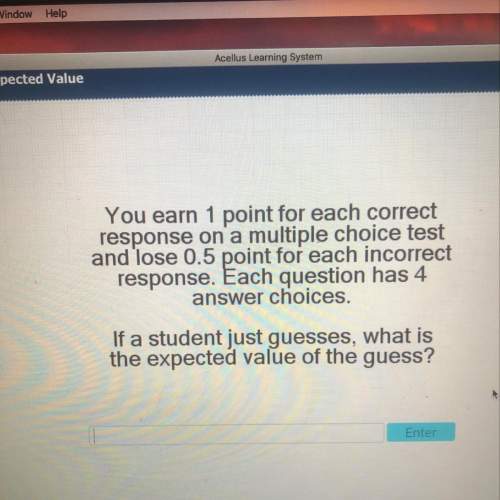For positive integers A, B, and C with C>A>B, let
N=A(A−B)(C−A).
If N is a positive pri...

Mathematics, 10.12.2020 01:00 carley608
For positive integers A, B, and C with C>A>B, let
N=A(A−B)(C−A).
If N is a positive prime, what is the sum of all possible values of C−B?

Answers: 3


Other questions on the subject: Mathematics

Mathematics, 20.06.2019 18:02, kimboblack4192
Mr angulo buy 5/8 pound of red grapes and 3/8 pound of green grapes. how many pounds of grapes did mr angulo buy
Answers: 1


Mathematics, 22.06.2019 00:20, mya1318
Match the following reasons with the statements given to create the proof. 1. do = ob, ao = oc sas 2. doc = aob given 3. triangle cod congruent to triangle aob vertical angles are equal. 4. 1 = 2, ab = dc if two sides = and ||, then a parallelogram. 5. ab||dc if alternate interior angles =, then lines parallel. 6. abcd is a parallelogram cpcte
Answers: 2
You know the right answer?
Questions in other subjects:

Mathematics, 06.05.2020 06:59

English, 06.05.2020 06:59


Engineering, 06.05.2020 06:59


Mathematics, 06.05.2020 06:59



Mathematics, 06.05.2020 06:59

Mathematics, 06.05.2020 06:59




